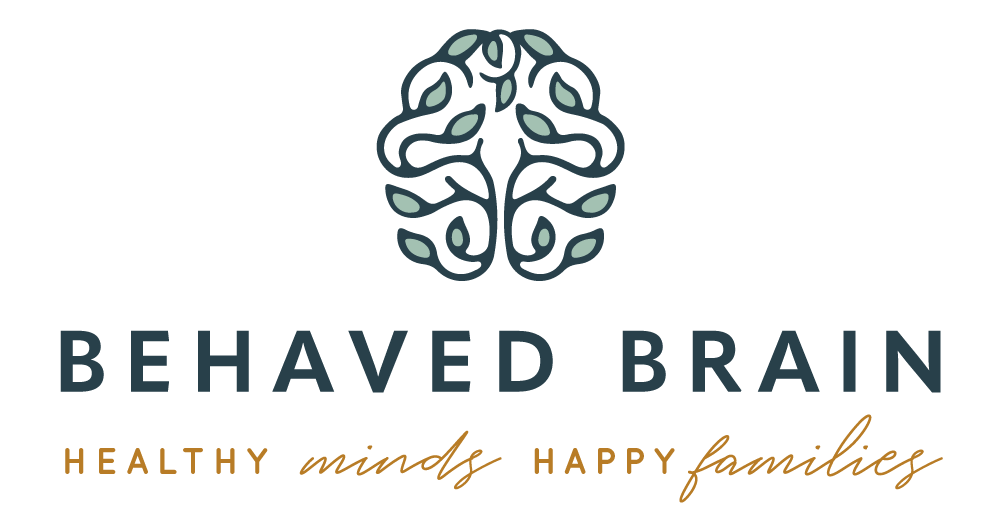Today’s entertainment technology simply feeds on the most fundamental flaws of our brain. Our reward system is hijacked on a daily basis as our children, and people of all ages, become addicted to the dopamine hit that screen time provides. Evidence is mounting about the damning effects that screen time has on our basic socialization skills, deeply impacting successful relationships, self-esteem, ambitions and so much more.
As a brain health-focused practice, technology addiction has far and beyond taken the lead as the most consequential challenge we treat in our practice today. We estimate that nearly 80% of the behavioral challenges we treat today are a direct result of denied screen time. The parents of children and teens are struggling with limiting screen time to keep their children from the negative impacts of gaming, social media and entertainment technology.
And while that all sounds deeply ominous, the good news is that there are ways to break the cycle of technology addiction and help your entire family disconnect in order to reconnect at the fundamental level. But before we discuss that, let’s first review how we got here in the first place.
The Advent of Screen Time
Here’s the reality: we don’t know what we don’t know. And handheld devices, like smartphones and tablets, only became mainstream in the early 2000’s. At the time, we were all excited to see how these new applications were advancing our lives. With this came educational games to support child development, and of course, not so enriching content made to entertain us. Does anyone remember Angry Birds?
Nevertheless, naïve parents of the time found that pacifying children with tablets helped provide children with some educational content while distracting them enough for parents to complete menial tasks. Teens of the time were among the first to embrace all the features of smart phones, including social media, podcasts, shopping, gaming, and billions of applications – all at their fingertips with little or no parental oversight.
In just a few years, we started to see the dramatic impact that screen time was having on our kids. Anecdotal evidence pointed to delayed speech in young children in addition to a rise in screen time-related tantrums. Teens were reporting higher levels of depression, isolation, and lowered self-esteem as online bullying surged and comparison culture became ubiquitous.
The most alarming measure on the impact of screen time comes in the form of suicidal ideation and suicide rates. Pew Trusts conducted research and compiled national data to see how teen suicide rates changed over a 10-year period from 2011 to 2021, estimating that suicide ideation and suicide attempts increased 60% over 10 years. Their study revealed the following:
“Overall, 22% of high school students in the recent survey said that they had seriously considered suicide within the past year, up from 16% in 2011. Eighteen percent said that they had made a suicide plan, and 10% said they attempted suicide at least once, compared with 13% and 8%, respectively, 10 years earlier.”
While the study does not directly link technology addiction with suicide, we know anecdotally that screen time is the single most relevant change factor that has impacted mental health over the same time period. And interviewing children and teens over those years has yielded plenty of evidence that increased depression, anxiety, isolation, and feelings of worthlessness are directly correlated with the negative impacts of technology addiction.
Some of the classical signs of technology addiction include:
- Increased isolation
- Brain Chemical Imbalances (Dopamine)
- Sleep Problems (Melatonin disruption)
- Mood changes
- Reduced attention span
- Lowered academic performance
- Lowered socialization
- Bullying
- Increases in violent behavior
- Tantrums at denied screen time
Technology Addiction is Addiction
Though we continue to learn more about the impacts of technology addiction in real time, much of the behavioral impacts dovetail with classical signs of addiction. That’s because the same systems are being rewarded in the brain as experienced by addicts of other varieties, such as alcohol, gambling, sex and drugs. In fact, when you read this list of symptoms of technology addiction, they are the same as all addictive behaviors. They include:
Inability to Limit Usage: Struggles to reduce or control time spent on devices despite efforts to cut back.Continues using screens despite awareness of negative consequences.
Neglect of Responsibilities: Skipping work, school, or household tasks to stay online or use devices.Decline in academic or professional performance.
Loss of Interest in Non-Screen Activities: Reduced engagement in hobbies, outdoor activities, or social interactions that don’t involve screens. Preference for virtual interactions over real-life connections.
Compulsive Checking: Constantly checking devices for updates, notifications, or messages, even during inappropriate times (e.g., while driving or during conversations).
Escaping Reality: Using screens as a way to cope with stress, anxiety, or depression.
Irritability and Mood Swings: Becoming anxious, angry, or frustrated when unable to access screens or devices.Feeling “empty” or bored without a device.
Preoccupation: Constantly thinking about screen-related activities, such as gaming, social media, or browsing.
Guilt or Shame: Feeling guilty about the amount of time spent on screens but unable to stop.
Depression and Anxiety: Increased feelings of loneliness, sadness, or anxiety linked to excessive screen use.
Interrupting the Addictive Feedback Loop
An “addictive screen time feedback loop” refers to a cycle where using a screen triggers a release of dopamine in the brain; a neurotransmitter associated with pleasure and reward. This creates a classic pleasure response that encourages continued use, leading to a pattern of excessive screen time where the user feels compelled to keep checking for more stimulation. Therefore, the more you use the screen, the more you want to use it due to the brain’s reward system being activated.
And this response is no accident – it’s by design. Companies have been learning that the more “addictive” their technology is, the more user share they gain from the platform. Many digital platforms are designed with features like endless scrolling, notifications, and variable rewards to maximize engagement and keep users hooked in this feedback loop. This was well documented in “The Social Dilemma,” famously streamed on Netflix with over 100 million views.
In most cases, it’s not realistic to totally eliminate technology from everyday life. After all, there are plenty of reasons why technology improves our lives. And we should not feel bad that, at times, technology can hijack our most fundamental reward system. After all, it’s designed to do just that! So, at Behaved Brain, we recommend a mindful approach to breaking the technology addiction feedback loop. Here are some of the ways we implement that:
Track Usage: Utilize an app or tool to monitor screen time for the whole family. Then, set and stick to screen time limits for all.
Set Boundaries: Implement limits on screen use and designate screen-free times (e.g., during meals or before bedtime).
Encourage Alternatives: Promote activities like exercise, reading, gardening, or face-to-face interactions. Utilizing a calendar and planning events together as a family can improve the desire to follow through with screen time restrictions and encourages other forms of rewards.
Therapy: Working with a therapy team, who is also a neutral source of guidance, can significantly improve the likelihood that your family member addresses their screen time addiction and implements the changes recommended by the team.
Delay Screen Introduction: For families with young children, avoid giving them any personal technology device for as long as you are able. Every year we push this age further out, so there is no “right” age to introduce screens. As a general rule of thumb, we suggest avoiding a personal tablet or phone until high school. There are plenty of communication options that do not come with the implications of smart devices.
Technology Addiction Certified
Since technology addiction represents such a large facet of our practice, our team endeavored to get certified in Technology Addiction. Through this certification, we’re able to better diagnose and treat the fundamental nature of technology addiction and provide accurate and holistic support to the families we see. While technology addiction remains a field that is constantly changing, and revealing more evidence year after year, we have found that our approach to technology addiction is actively helping people of all ages to break the cycle of addiction and become more attuned to their fundamental goals while reducing the symptoms of technology addiction that has impacted their personal sense of self, relationships and overall ambitions. If you would like to schedule a consultation to speak with someone at Behaved Brain about technology addiction, please call 201-857-5380 or email us at Wellness@behavedbrain.com.







